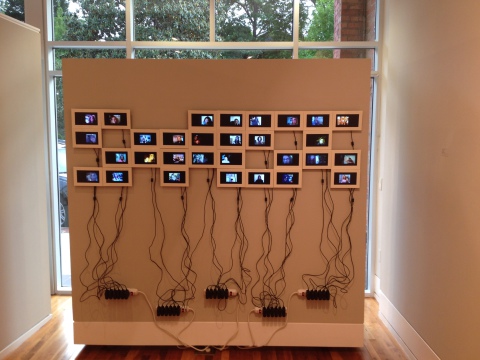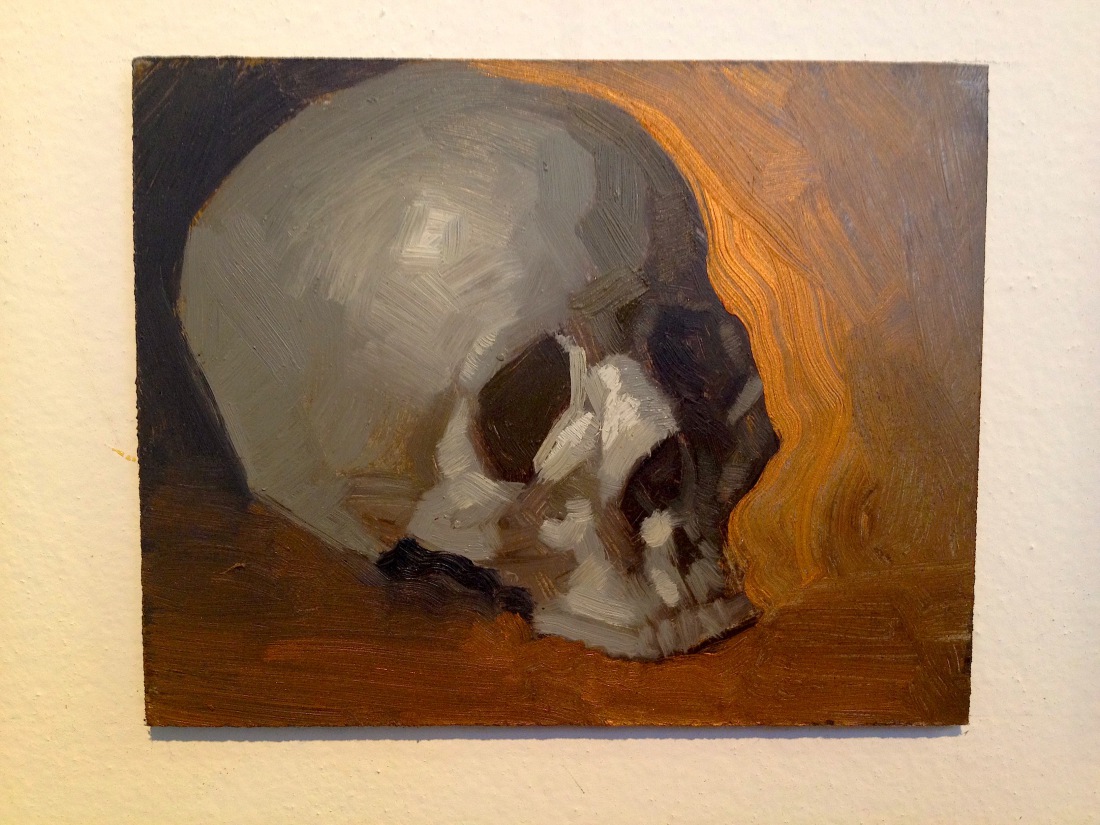The year 2014 was one of introspection — in the arts, that is. You could argue that self-analysis is a core concept underlining many, if not most, artworks. And you would be right. But this year it seemed to permeate every surface and layer of the arts scene, from paintings and photos to leases and fundraising campaigns.
In the realm of arts institutions, this meant organizational reformation. The Asheville Area Arts Council strategically sold off the last of its property holdings (13 Biltmore Ave.), moved from the River Arts District to a comfortable gallery space in the Grove Arcade and reformatted its finances and programming strategies. The year also saw the return of revamped and re-energized PechaKucha Night, a short-order art-and-design forum.
In September, the Black Mountain College Museum + Arts Center received a $646,685 grant. The award enabled the board to embark on a years-in-the-making expansion project, but not before looking into its current holdings, nixing its admission fee and expounding upon its philosophical core. The new gallery will open in January (across the street from its current 55 Broadway location), in a space owned by the Center for Craft, Creativity & Design.
The center itself reopened in its current downtown gallery this past January. It was forcibly converted, via a single budget cut, from a Hendersonville-based UNC Asheville subsidiary to an independent 501(c)3 organization. In the wake of that move, the center and Warren Wilson College collaborated on a landmark dual-location exhibition that brought the quilts of four Gee’s Bend artists to Asheville.
The Asheville Art Museum, meanwhile, renegotiated the terms of both its lease and a $1.5 million Tourism Development Authority grant, and continued fundraising efforts (now in the 12th year) for a $24 million expansion plan.
But in the milieu of artworks and exhibitions, that same introspection routinely placed the individual within the greater collective consciousness. Here are a few of the year’s best:
The Free World
In May, the Upstairs [Artspace] in Tryon hosted John D. Monteith: Portraits, a full-circle multimedia exhibition that featured porcelainlike oil renderings of digitally captured portraits beside thousands of other similarly digital, yet troublesome images. It was a piece by Monteith, a Columbia, S.C.-based artist, that arguably offered up the year’s most innovative portrayal of an individual in the social — and specifically digital — landscape.
“The Free World,” a video installation, featured endlessly revolving stills from Monteith’s collection of over 16,000 selfies. They flickered on and off a series of 30 4-by-6-inch LCD screens, sucking in fascinated viewers with thousands of blank stares and contorted faces backdropped by living rooms, bedrooms, kitchens and the like. Each image was downloaded (or collected) from chatroom profile pictures. Most were sourced from North and South Carolina residents, captured by webcams and clunky, early-model digital cameras. All of them were from the Internet’s glitchy, low-res infancy between 1999 and 2005, which gave the work a dated, archaeological appeal.
That fascination was quickly met with scrutiny and then self-reflection. The piece was a cultural portrait after all, one built from individuals similar to ourselves. And though viewers were unlikely to be among the 16,000 faces, it was hard not to see yourself in them.
Ralph Burns: A Persistence of Vision, 1972-2013

The show had over 120 hand-printed photographs that drew a portrait of the human condition from roughly 41 years of work. They depicted a host of cultural and historic icons and examined politics and personalities as they arced through moral codes and commercial trends. Others explored religious practices — free-form and organized, individual and societal. Some were direct, such as those that focused on centuries-old religious practices. Others formed an image of cultural worship of a figure, like Elvis, or a product, like tobacco.
Unlike previous exhibitions of Burns’ work, which often focused on one series at a time, this body of work collectively offered an added benefit so far unseen: a fully rendered portrait of Burns, the photographer and the individual.
Catacombs
In June, Marshall-based painter Francesco Lombardo filled Izzy’s Coffee Den with hundreds of ruminations on one subject: death. The show, Catacombs, featured 250 4-by-5-inch oil paintings of skulls lining the cafe’s walls, each different from the next.
The pieces began as mere studies. Lombardo would paint one or two at a time during brief breaks from his large-scale, neo-baroque figure paintings, which make up the bulk of his work. But as these small skeletal sketches began to pile up, so did their psycho-gravitational pull. They began to remind him of the Roman catacombs.
In amassing and exhibiting the works, Lombardo wasn’t focused on a verbatim re-creation of such a space — though, Izzy’s was the perfect atmospheric fit. It was, however, an effort to temporarily add an unfamiliar psychological undercurrent — 250 sets of eyes symmetrically lining the walls — to the cafe’s contemplative state.
Lombardo is by no means a deathmonger. Rather, his work is about death’s impact on one’s direction and decisions. Much of Lombardo’s own philosophical outlook on his painting draws from the writings of Marcus Aurelius (who embraced his own mortality as a means of freeing himself from its psychological limits) and from Nietzsche’s concept of eternal re-occurrence. The works, he said, simply asked viewers whether they’re living a life that they’d be happy with if condemned to repeat it for eternity. What better way to contemplate the end of another year, right?



Before you comment
The comments section is here to provide a platform for civil dialogue on the issues we face together as a local community. Xpress is committed to offering this platform for all voices, but when the tone of the discussion gets nasty or strays off topic, we believe many people choose not to participate. Xpress editors are determined to moderate comments to ensure a constructive interchange is maintained. All comments judged not to be in keeping with the spirit of civil discourse will be removed and repeat violators will be banned. See here for our terms of service. Thank you for being part of this effort to promote respectful discussion.